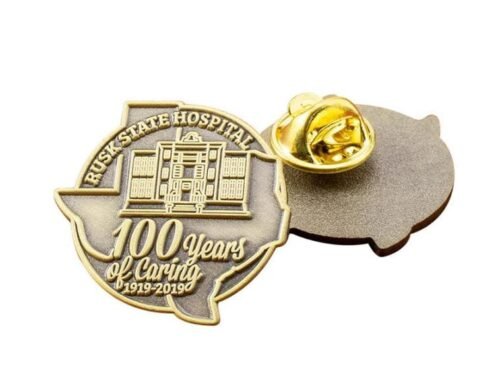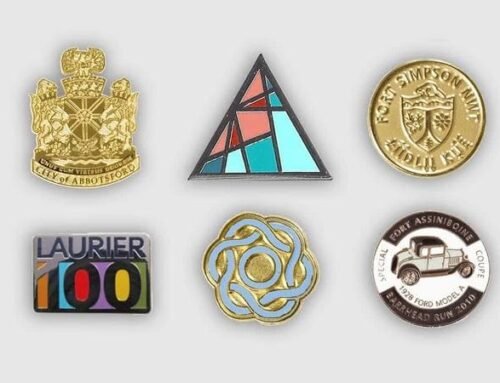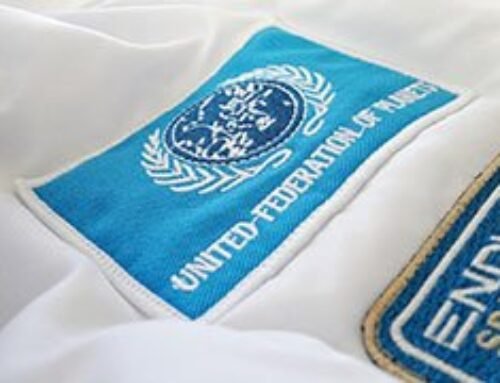Military pins are more than just small metallic ornaments pinned to a lapel or cap. They are symbols of honor, bravery, and pride that carry the weight of history. These little emblems have stories woven into them, and they represent the legacy of military service. From the Civil War to modern-day engagements, military pins have adorned the uniforms of soldiers and civilians alike, standing as badges of allegiance, duty, and sacrifice. This article will dive deep into the meaning, history, types, and traditions behind U.S. military pins.
Table of Contents
What Do Military Pins Represent?
At their core, U.S. military pins serve as powerful symbols. For the men and women of the armed forces, these pins represent much more than the unit they served in or their military branch. Each pin reflects dedication to service, patriotism, and often the memory of comrades lost. Whether it’s the American flag pin, unit insignia, or a commemorative service pin, military pins have long been a visible reminder of military life’s values.
Beyond that, they’ve become a form of expression, allowing veterans and active-duty soldiers to proudly display their affiliations and achievements. Today, military pins are a common sight at national holidays such as Veterans Day and Memorial Day, where they offer silent tributes to the sacrifices of those who served.
The Difference Between Military Insignia and Pins
Although the terms “pins” and “insignia” are often used interchangeably, they carry different meanings in the military context. Insignia usually refers to a symbol of rank or affiliation and may not always take the form of a pin. For instance, an insignia could be a patch sewn onto a uniform, but a military pin is typically a metallic badge worn on uniforms or civilian clothing. The use of insignia dates back centuries and remains a key element of military uniforms across the globe.
In the U.S. military, insignia play a critical role in identifying soldiers’ rank, branch, and qualifications. The tradition of wearing pins as a part of insignia was born out of a need to differentiate between soldiers’ units or divisions. Pins are convenient, easy to produce, and durable, making them a perfect option for creating distinctive military symbols.
How to Wear Military Lapel Pins
Wearing a military lapel pin isn’t just about accessorizing your outfit—it’s about paying respect. The placement of military pins is important, especially in formal or official settings. According to the U.S. Flag Code, veterans, active-duty personnel, police officers, and members of patriotic organizations are allowed to wear lapel pins on their official uniforms. The most common place to wear a military lapel pin is on the left lapel, near the heart, symbolizing loyalty and service to the nation.
For civilians attending events such as parades or memorial services, it’s acceptable to wear military pins on jackets, hats, or collars as a sign of respect. While there are fewer formal rules for civilians, wearing military pins should always be done with a sense of pride and decorum.
The History of U.S. Military Pins
The tradition of wearing military pins in the U.S. began during the Civil War in the 1860s. At the time, officers were issued brass pins denoting their unit number. These pins became practical ways to distinguish between units and instilled a sense of unity and loyalty within the ranks. This practice would continue and evolve over time, particularly during World War I, when lapel pins were awarded to soldiers for exemplary service.
The significance of lapel pins grew during World War II. Soldiers returning home often wore their pins on their civilian clothes, proudly displaying their service and accomplishments. Lapel pins were also given to family members of fallen soldiers, a practice that continues to this day, where Gold Star families receive pins to honor their loved ones’ sacrifices.
Today, military pins have grown beyond their utilitarian origins. They are used to commemorate service, celebrate victories, and honor soldiers across all branches of the U.S. military. The tradition of military pins continues as a vibrant part of American culture, serving both as personal mementos and historical artifacts.
Five Types of U.S. Military Pins
There are five main categories of military pins in the U.S., each representing a distinct branch of service. Let’s break them down:
1. Army Pins
The U.S. Army is the oldest and largest branch of the U.S. military. The first professional army in American history, the U.S. Army logo—represented by a white star outlined in yellow with black accents—was formally approved as the service branch’s insignia in 1974. Army pins often feature the Army seal and crossed rifles, representing both its heritage and modern warfare. These pins serve as a proud symbol of a soldier’s affiliation with the nation’s ground forces.
2. Air Force Pins
The Air Force, established in 1947, is the youngest branch of the U.S. military. Its symbol, the Arnold wings and star, has come to represent the branch’s commitment to air and space superiority. Air Force pins are awarded for various achievements and positions, and they often feature sleek, aerodynamic designs to reflect the branch’s high-tech nature. With over 320,000 active-duty personnel, Air Force pins are seen everywhere from flight jackets to dress uniforms.
3. Marine Corps Pins
The United States Marine Corps is known for its fierce loyalty and elite status. The emblem, featuring an eagle, globe, and anchor, symbolizes the Marines’ readiness to serve anywhere in the world. The motto “Semper Fidelis,” or “Always Faithful,” encapsulates the ethos of this branch. Marines are known to wear pins that represent everything from specific deployments to their official rank. Marine Corps pins often carry deep sentimental value, acting as badges of honor within the tight-knit Marine community.
4. Navy Pins
The U.S. Navy is one of the most powerful maritime forces globally, with a history that dates back to 1775. The Navy’s core values are Honor, Courage, and Commitment, and its logo features an eagle with spread wings. Navy pins are awarded for achievements ranging from rank advancement to specialized roles like submariners or aviators. Navy personnel are often given pins that commemorate their ships, missions, and years of service.
5. Coast Guard Pins
The U.S. Coast Guard may be the smallest branch of the military, but it has a proud history of safeguarding the nation’s waters. Established in 1790, the Coast Guard’s motto is “Semper Paratus,” meaning “Always Ready.” Coast Guard pins symbolize the branch’s commitment to maritime law enforcement, search and rescue, and environmental protection. These pins often reflect the branch’s history and tradition, serving as mementos for those who serve and protect U.S. shores.
The Importance of Military Pins in Modern Times
Military pins have evolved over the decades, yet their significance remains as strong as ever. In modern times, military pins symbolize not only the achievements of active-duty soldiers but also the sacrifices of veterans and their families. They have become collectible items, often passed down through generations, representing family history and military pride.
Military pins today are used as a form of personal expression and identity. Veterans wear them as a visible reminder of their service, while civilians wear them to show support for the military. For collectors, vintage military pins from earlier wars are prized artifacts, often sought after in military history museums and online marketplaces. Collectors search for rare pins that tell a unique story—pins that have been part of significant historical events or that represent a specific, short-lived unit.
How to Obtain Military Lapel Pins
If you’re looking to design your own military lapel pin or need to source them for a special occasion, companies like GS-JJ provide customizable options. They offer a range of military pin templates that can be tailored to your design preferences, allowing you to create a unique representation of your military service, unit, or event.
Whether you need pins for a special military event, reunion, or to commemorate service, the process of creating custom military lapel pins has become more accessible than ever. Companies now offer online design systems where you can customize everything from the shape and size to the colors and finishes, ensuring that your pin is exactly what you envision.
Conclusion: The Lasting Legacy of U.S. Military Pins
Military pins may be small, but their meaning is immense. Each one tells a story, whether it’s of personal bravery, a soldier’s rank, or a unit’s history. They are symbols of sacrifice, loyalty, and patriotism, worn proudly by veterans and active-duty members alike. In today’s world, military pins continue to hold cultural and emotional significance, representing not only the achievements of those who serve but the values of a nation that honors its heroes.
Whether pinned to a lapel, jacket, or uniform, these little emblems are an enduring reminder of the courage and dedication of those who wear them. For civilians, they offer a way to show solidarity and respect for the armed forces. For soldiers, they’re a badge of honor—a physical representation of their service and dedication to their country.
Military pins have come a long way from their humble origins, but their legacy is timeless. They are small symbols with big meanings, and they will continue to be cherished for generations to come.





